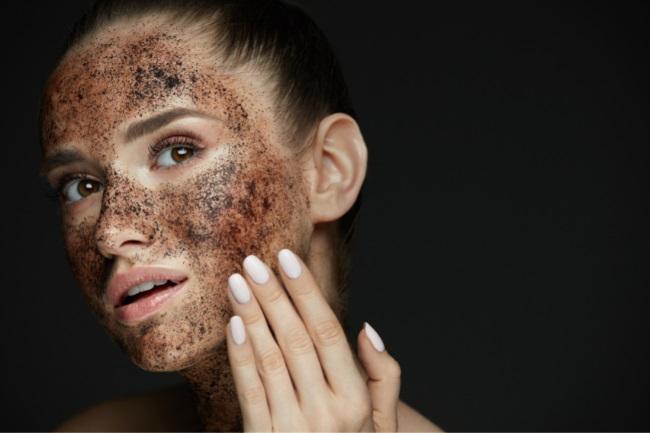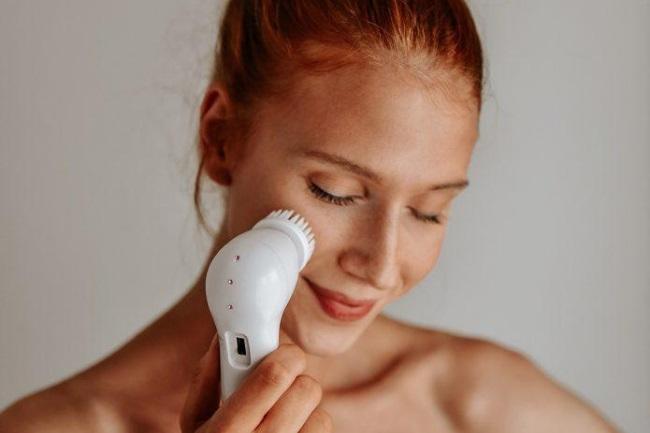If you’re familiar with both processes of cleansing and exfoliating your skin, you may be wondering whether there’s really much difference between them. It’s no secret that they’re both similar to each other, but what the differences? Let’s read on to find out.
What is cleansing?

Before we start to take a look at the differences between clean sing and exfoliation, it’s important to confidently establish what each of them are, and exactly how each process works. Although it’s something most of us do every day, many people aren’t aware exactly how cleansing works, so it’s time to discover the answer now.
When you cleanse your skin, you are generally removing any of the surface oils, dirt, and other debris from above the skin, which can be rinsed off without the need for the penetration of any product. In other words, a cleanser simply works on top of your skin to remove anything there and doesn’t work any deeper than surface level.
| Cleansing Method | Description | Example Products |
|---|---|---|
| Face Wash | Liquid or foaming cleanser for cleansing the face | Gel cleansers, cream cleansers |
| Cleansing Balm | Solid, oil-based formula that melts into the skin | Balm cleansers, oil cleansers |
| Micellar Water | Water-based cleanser that uses micelles to remove dirt and impurities from the skin | Micellar water solutions, cleansing wipes |
| Cleansing Milk | Gentle, lotion-like cleanser for sensitive skin | Milk cleansers, cream cleansers |
Cleansing is important to your daily skincare routine as it’s responsible for removing all the grime that builds up throughout the day which would otherwise result in clogging the pores if it’s not cleansed. Consequently, this can help to reduce and prevent breakouts, as well as blackheads and other skin concerns.
Of course, there are lots of different cleansing methods available, from products such as butters and waters to gel and traditional bars of face soap, and each brings its own benefits to work for different skin types and requirements. Regardless of the product you decide to use, a cleanser will always do the same job.
- GENTLE NON-ABRASIVE LEAVE-ON EXFOLIATOR: with 2% BHA (Beta hydroxy acid) to unclog & diminish enlarged pores, exfoliate dead skin cells, smooth wrinkles & brighten & even out skin tone; Combats redness, wrinkles, aging, enlarged pores, & blackheads
- Dramatically improves skin's texture for radiant youthful even-toned skin; Beta hydroxy acid (BHA also known as salicylic acid) mimics the natural exfoliation process of younger skin by helping it shed extra layers while unclogging and clearing pores
- AII IN ONE CLEANSING SYSTEM: This facial cleansing brush contains 2 bristle brush heads of different sizes,1 silicone brush head,1 pumice stone, 1 makeup remover sponge, 1 rolling massage brush head, 1 exfoliating brush head , for a total of 7 brush heads, suitable for all skin types including sensitive skin, which can meet a variety of cleansing and skincare needs including removes whitehead, remove blackheads, deep pore cleansing, makeup removal and more
- SUPERIOR PERFORMANCE & DURABLE: We are committed to making the quality better through experimental comparison. The motor of our face brush far exceeds the market level, provides twice the power of regular spin brushes. It is equipped with three cleansing bristle brush heads for replacement to ensure clean use as well as a durability to make your skin healthier
- Comprehensive Facial Care: This set of 4 brushes not only exfoliates and cleanses but also enhances skin health through massage, offering a multifunctional approach to facial care that fits effortlessly into your skincare routine.
- High-Quality Material: Made of 100% food-grade premium silicone, these brushes are soft, durable, non-poisonous, and free from any unpleasant smell. The gentle design makes them suitable for all skin types, especially sensitive ones.
If you click Buy on Amazon and make a purchase, I'll earn a small commission at no additional cost to you.
What is exfoliation?

On the other hand, it’s time to take a look at what exfoliation is, as we’ve already established cleansing. Unlike cleansing, exfoliation is a slightly more complicated process, and we’ll discuss the other differences between the two a little later on. For now, let’s discover the world of exfoliation.
When it comes to using a scrub or other exfoliating product or tool, the aim is to remove the upper layer of dead skin cells from the skin. These skin cells are present as a result of natural cell turnover, and they can cause the skin to appear dull and less glowy before they’re removed.
As mentioned, these cells are left by the process of cell turnover, as the skin is continuously regenerating itself, and producing fresh skin cells to replace old ones or lost ones as a result of wounds and damage. When these new cells are created, the old ones are pushed closer and closer to the surface, until eventually they’re on the outermost layer of the skin.
| Exfoliation Method | Description | Example Products |
|---|---|---|
| Physical Exfoliation | Uses physical particles or tools to manually scrub away dead skin cells | Facial scrubs, exfoliating brushes, exfoliating gloves |
| Chemical Exfoliation | Utilizes acids or enzymes to dissolve and remove dead skin cells | AHA (alpha hydroxy acids) exfoliants, BHA (beta hydroxy acids) exfoliants, enzyme masks |
This is where exfoliation comes in, and any product or tool will be designed to loosen the bonds between these outermost skin cells and the rest of the skin to help remove the cells and speed up the entire process.
Not only does this reveal a fresher, brighter and glowier complexion as a result, as your skin is now made up of younger cells, but it also comes with additional benefits such as the deeper cleansing of your skin and unclogging of your pores.
Also read:
Best Facial Exfoliators for Dry Skin (5 Best Ones)
Does Exfoliating Help with Acne? (Tips That Help)
Are cleansing and exfoliating the same?

Now that we’ve gotten a clear understanding about what each of the two are, it’s time to find out about the exact differences between cleansing and exfoliating your skin.
It’s first important to acknowledge that no: cleansing and exfoliation aren’t the same at all, and you definitely shouldn’t think about them in the same way or rely on the to do the same jobs as each other.
| Aspect | Cleansing | Exfoliating |
|---|---|---|
| Purpose | Removes dirt, oil, and impurities from the skin surface | Removes dead skin cells and promotes skin cell renewal |
| Method | Uses cleansers, soaps, or face wash to cleanse the skin | Utilizes physical or chemical exfoliants to slough off dead skin cells |
| Frequency | Can be done daily as part of a regular skincare routine | Typically done 2-3 times a week depending on skin type |
| Texture | Gentle and non-abrasive on the skin | May have a slightly rough or gritty texture |
| Benefits | Cleanses the skin, unclogs pores, and prepares it for further skincare products | Improves skin texture, enhances product absorption, and reveals a brighter complexion |
| Suitable for | All skin types, including sensitive and dry skin | Generally suitable for most skin types, but caution should be exercised with sensitive or inflamed skin |
As we mentioned earlier, cleansing is the removal of grime and dirt from the surface of the skin and doesn’t usually have much to do with anywhere deeper throughout the layers of the face or body. This contrasts to exfoliation in the sense that it usually works deeper into the layers of the skin, pulling out debris from inside of pores, and cleaning more thoroughly in general.
Of course, another obvious difference is the matter of an exfoliant removing the dead skin cells, whereas a cleanser doesn’t do this at all. Instead, it does exactly as it says, it cleanses, and nothing more. This means you should expect to see the same results of glowy, dewy skin after cleansing like you would post-exfoliation.
At the end of the day, cleansing is usually more of a preventative measure, keeping the skin clean and limiting the chances of developing acne and similar concerns, but exfoliation is more of a cure, treating skin which has already been damaged or affected.
Final thoughts
In the end, it’s clear that cleansing and exfoliation are two different processes and, when you really look into them, they’re not quite so similar. There are a variety benefits that come with each, but these vary slightly as both processes take place slightly differently, too.




